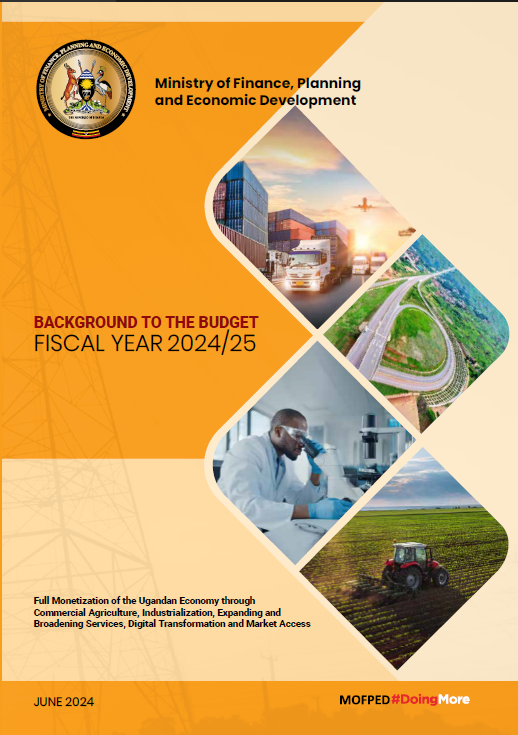
Introduction
Fiscal Year 2024/25 is the fifth and final implementation year of the 3rd National Development Plan (2019/20-2024/25). The state of development outcomes and service delivery indicators at the end of FY2024/25 will confirm the country's performance against the development targets in the 3rd NDP. They will also serve as a baseline reference for assessing national development progress under the 4th National Development Plan (2025/26 to 2029/30) that is to be finalized and launched in FY2024/25. The 4th NDP (NDP IV) will implement the first five years of the strategy for growing the economy tenfold, from about USD50 billion in FY2022/23 to USD500 billion by 2040.The Budget for FY2024/25 retains the theme of “Full Monetization of the Ugandan Economy through Commercial Agriculture; Industrialization; Expanding and Broadening Services; Digital Transformation, and Market Access”. The main thrust of the strategy for FY2024/25 is on maintaining peace and security; road maintenance and construction of a few strategic roads; rehabilitation of the Meter Gauge Railway and construction of the Standard Gauge Railway; electricity transmission and utilization of existing energy stock; investing in wealth creation initiatives; investing in the people of Uganda through education, health and water; preparedness and management of natural disasters; and management of international commitments.
In FY2023/24, Government continued its response strategy to the economic and social challenges induced by the spillover effects of COVID-19, and the global economic disruption occasioned by the Russia-Ukraine conflict, and the ongoing conflict in the Middle East. Despite this difficult global environment, the country was able to record notable development gains that contributed to progress in its socioeconomic transformation, and to advance its interests at the regional and global level.
At the national front, the economy sustained its recovery from the effects of COVID-19. National output in FY2023/24 is estimated to have expanded by 6.0 percent compared with 5.3 percent in FY2022/23 and 4.6 percent in FY2021/22. There was a corresponding rise in per capita GDP in FY2023/24 to an estimated USD1,146 compared to USD1,081 in FY2022/23 and USD1,043 in FY2021/22. In terms of trade, the EU joins COMESA as the major trading blocs that Uganda enjoys a trade surplus with. The combined trade between Uganda and the EU reached a historic high of USD1.59 billion in 2023, with a trade surplus of USD144 million in favor of Uganda.
New national data also shows a further improvement in life expectancy from 63 years (2011) to 68 years (2022). This is validated by new international data that indicates Uganda has for the first time, moved from the low to medium category of the Human Development Index (HDI). Between 1990 and 2023, Uganda's HDI value increased from 0.329 to 0.550, an increase of 19.2percent1. The country also met for the first time, in March 2024, the criteria for graduation from the category of Least Developed Countries (LDCs). Results of the 2024 National Population and Housing Census (NPHC) will confirm Uganda's national population, and clarify the country's progress towards middle-income status.
